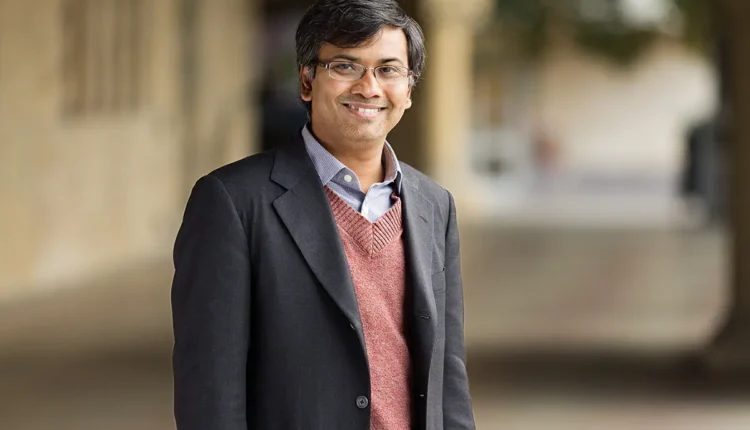In the intricate realm of mathematics, where patterns unfold like secrets of the universe, few luminaries shine as brightly as Professor Kannan Soundararajan. Born on December 27, 1973, in Madras, India, his mathematical prowess began to unfurl at a young age.
Raised in Madras, he attended the prestigious Padma Seshadri High School in Nungambakkam. The year 1989 marked a significant milestone when he participated in the Research Science Institute, setting the stage for a remarkable journey.
Early Achievements of Kannan Soundararajan
Soundararajan’s brilliance took center stage when he represented India at the International Mathematical Olympiad in 1991, earning a Silver Medal. This early recognition paved the way for his academic pursuits, and in 1991, he embarked on his undergraduate studies at the University of Michigan, Ann Arbor, graduating with the highest honors in 1995.
Even as an undergraduate, Kannan Soundararajan’s achievements were extraordinary, winning the inaugural Morgan Prize in 1995 for his exceptional work in analytic number theory. Little did the world know that this was just the beginning of a trailblazing career that would reshape the landscape of mathematics.
Educational Odyssey
His academic journey continued at Princeton University, where he pursued his Ph.D. under the guidance of Professor Peter Sarnak.
The year 1995 marked a turning point as Kannan Soundararajan received the first five-year fellowship from the American Institute of Mathematics, setting the stage for a series of illustrious positions at Princeton University, the Institute for Advanced Study, and the University of Michigan.
Contributions and Achievements
Kannan Soundararajan’s contributions to the field are nothing short of extraordinary. His work spans across automorphic L-functions, multiplicative number theory, and profound insights into combinatorial number theory.
In collaboration with Ramachandran Balasubramanian, he provided a proof of a conjecture of Ron Graham in combinatorial number theory. Furthermore, he played a pivotal role in settling the arithmetic Quantum Unique Ergodicity conjecture for Maass wave forms and modular forms.
Awards and Recognition
A testament to his brilliance, Kannan Soundararajan received the Salem Prize in 2003 and shared the prestigious SASTRA Ramanujan Prize in 2005 with Manjul Bhargava. His outstanding contributions were further acknowledged with the Infosys Science Foundation Prize in 2011 and the Ostrowski Prize in the same year.
International Recognition
In 2010, Kannan Soundararajan was invited to give a talk at the International Congress of Mathematicians on the topic of “Number Theory.” His plenary lectures continued, and in 2017, he was a plenary lecturer in the Mathematical Congress of the Americas. Elected to the 2018 class of fellows of the American Mathematical Society, his influence transcends borders.
Quantum Unique Ergodicity Conjecture
One of Soundararajan’s most groundbreaking achievements is the proof of the Quantum Unique Ergodicity Conjecture for classical holomorphic modular forms. His work in this area not only solidifies his position as a top analytic number theorist but also establishes connections between classical number theory and quantum physics.
Infosys Prize for Mathematical Sciences
In recognition of his path-breaking work in analytic number theory, Soundararajan was honored with the Infosys Prize for Mathematical Sciences. His development of innovative techniques to study critical values of general zeta functions played a pivotal role in proving the Quantum Unique Ergodicity Conjecture.
Legacy and Impact
Professor Kannan Soundararajan’s legacy echoes the traditions of mathematical giants like G.H. Hardy, John Littlewood, and Srinivasa Ramanujan.
His ability to bridge the realms of classical number theory and quantum physics has opened new avenues of exploration. The relationship he unveils between classical chaotic systems and their number theoretic analogs adds a layer of complexity to the understanding of the universe.
Also Read: Dhanurjay Patil: Bridging the Gap Between Data and Justice

